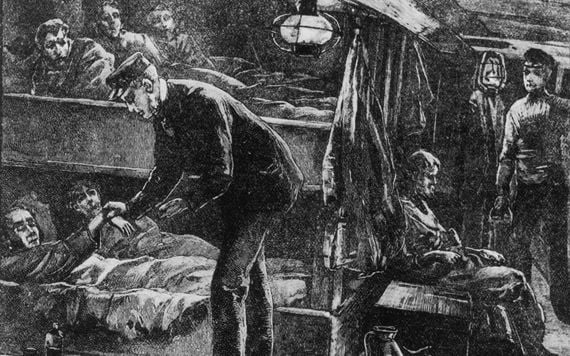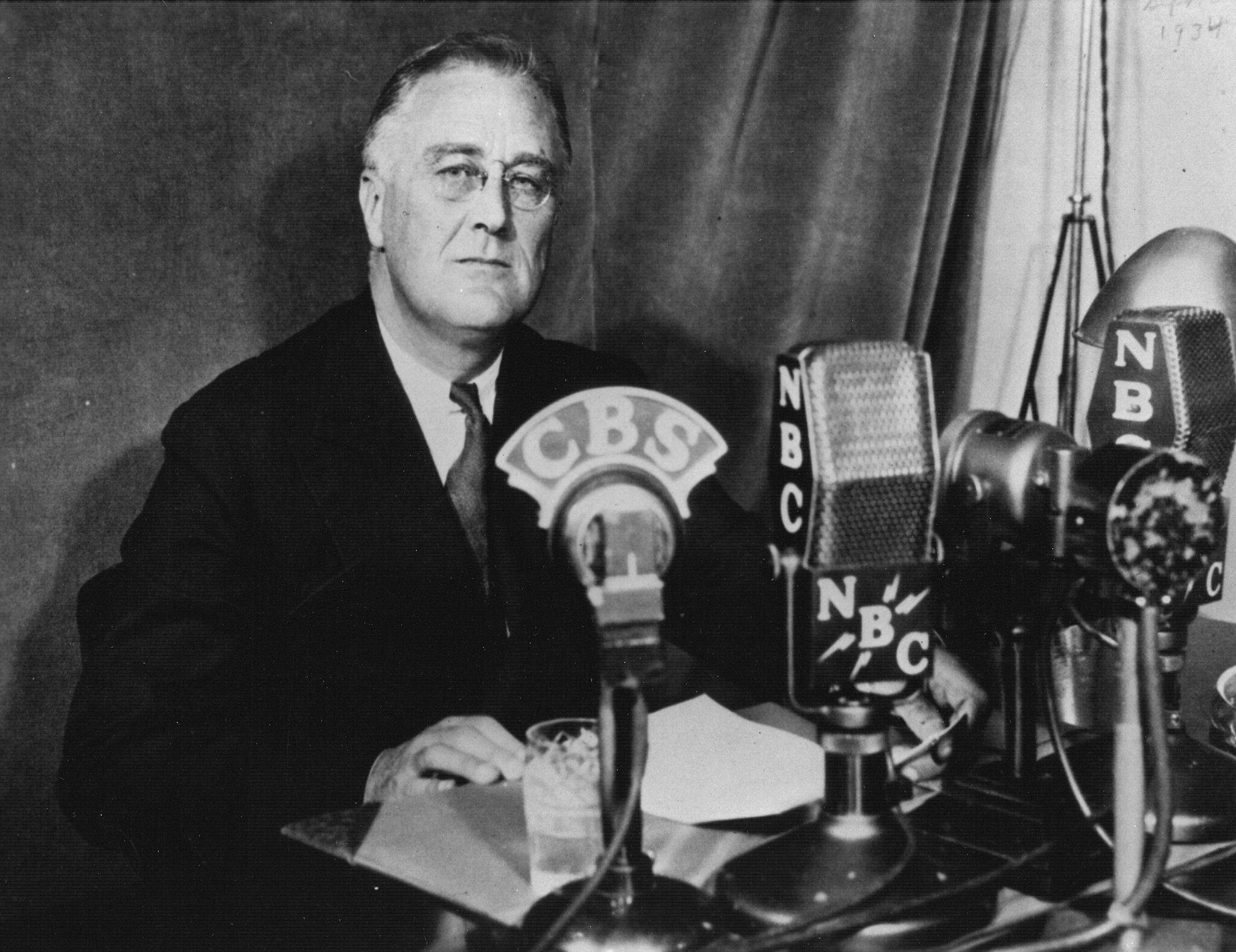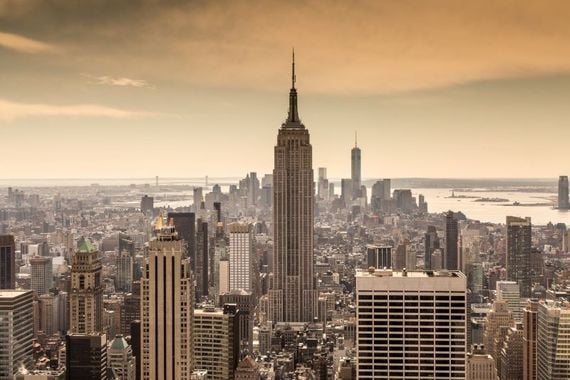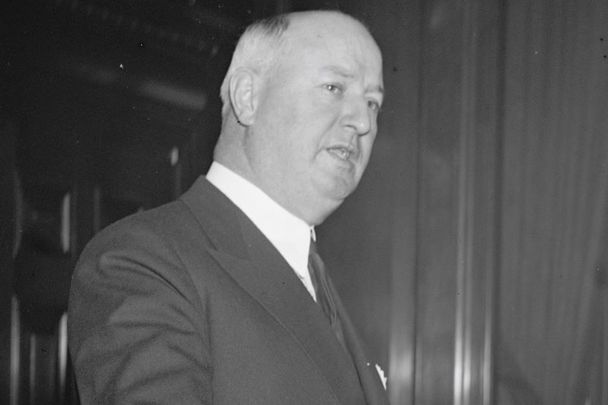James Farley was one of the first Roman Catholics to rise to national political prominence, the kingmaker who launched FDR to the presidency, and the man who brought Coca Cola to Europe.
The Farrelly's journey from Ireland
In 1850 a young couple left their home in Castletown Kilpatrick, in the townland of Ballinaskerry, Co Meath, which was still suffering the ravages of An Ghort Mhór (Ireland's Great Hunger / Famine). In a desperate bid for survival, they had decided, in common with many of their fellow Irish men and women, to seek a new life across the Atlantic Ocean in America.
John Farrelly and his wife Margaret bid a final farewell to their families as they knew this would be a one-way journey with no guarantees of a safe arrival in America aboard the harsh conditions of the cramped coffin ships.
Read more
The couple walked the 15 miles to Drogheda where they began their journey to America by first sailing to Liverpool. They would soon embark on their long and dangerous passage to the United States, cramped in the steerage section of one of the many steamers that moved across and back the Atlantic carrying new citizens for the young America.
The Farrelly’s were among the lucky ones who survived the perilous conditions on these ships and they finally arrived for processing on Ellis Island New York. The immigration officials told them that from then on, their name would be changed from Farrelly to Farley.
John Farrelly, or as he was now Farley, was 30 years of age when he disembarked on Ellis Island, while his wife Margaret was eight years younger. They settled in Verplank’s Point, Westchester, New York State, working hard to secure a better future for their children.

Inside a coffin ship, bound from Famine ravaged Ireland.
James Farley and Franklin D. Roosevelt
Years of hard work was rewarded when one of their grandchildren, James Aloysius Farley, became one of the most influential and powerful men in American politics. He would go onto be Post-Master General of the US and National Chairman of the Democratic Party (at the time the highest position a Roman Catholic politician had reached).
Franklin Delano Roosevelt (FDR) is widely considered to be one of the most well-known US presidents in world history but the story of the man who ran his campaigns and who then kept him in power is less well known, that of James Farley.

Franklin Delano Roosevelt (FDR).
Farley was a business executive with Coca-Cola, a Knight of Malta, and a political kingmaker. He was Roosevelt’s campaign manager for all of his major elections, including his presidential victories in 1932 and 1936.
Coming up in New York
James Aloysius Farley was born on May 30, 1888, one of five sons born to Irish Catholic immigrant parents in Grissy Point, New York.
His father, James senior, was a brickmaker whose business acumen helped him acquire a part-owner of three small brick carrying schooners. He was also extremely interested in politics and a strong supporter of the Democratic Party.
His mother Ellen was a homemaker and devoted to her five boys.
As the family’s fortunes prospered, tragedy struck when James was nine, in 1897, his father was fatally injured when the family horse accidentally kicked him in the ribs.
He left a small life insurance policy worth around $3,000 and his share of the Schooners to his widow Eileen, but this was not enough to support the family.
James Farley and his brothers would spend the next few summers working as laborers in brickyards.
They used this income to support themselves and help their mother eventually purchase a small grocery and bar saloon. James and his brothers would spend what spare time they had left working in the combination shop and bar alongside their mother.
James attended the public school system completing high school and, in his own words, "did enough studying to get by."
After graduating from high school, he attended Packard Business College, in New York City, in August of 1905 to study bookkeeping and other business skills.

New York City.
In the spring of 1906, Farley obtained a job with the Merlin Keiholtz Paper Company.
From 1911 to 1926 he was employed as a bookkeeper and sales manager for the Universal Gysum Company.
While working for Universal Gypsum Farley began to follow his late father’s interest in politics.
At just 23, Farley was elected the town clerk of Stony Point, New York. He was a renowned campaigner for social and civil rights earning a reputation as a progressive thinker and supreme organizer.
In 1920, James married his wife Elizabeth, they would go onto have three children.
The Democratic Party
In 1924, James served as a delegate to the Democratic National Convention where he formed a lifelong friendship with FDR, who, four years later, asked Farley to run his 1928 campaign for the New York Governorship.
As a reward for steering FDR to victory, Farley was named secretary of the New York state Democratic committee and plotted FDR’s re-election in 1930.
Farley then introduced FDR to the newspaper tycoon William Randolph Hearst who put his media empire behind electing Roosevelt as president in 1932.
Farley was appointed Post-Master General, which is the usual reward given to the new president’s campaign manager. He was also made the chairman of the Democratic National Committee. These appointments made James Farley the first Irish American Roman Catholic to achieve national success with either of the main American political parties.
As a member of FDR’s cabinet, Farley worked hard to ensure the post office survived the great depression. He is celebrated for the many souvenir sheets he issued to commemorate great American events and also Farley’s Follies, 20 stamps ungummed and never issued which have become much prized amongst stamp collectors.
James Farley was a prodigious networker and was famous for never forgetting the names of anyone he met. He was the gatekeeper of the Roosevelt administration and controlled the allocation of all presidential appointments.
He also helped bring an end to Prohibition and to develop closer ties between America and the Roman Catholic Church. In 1933 he traveled to Rome where he had an audience with Pope Pius XI and Cardinal Pacelli who was to later become Pope Pius the XII.
Whilst FDR is known for his New Deal which revitalized the US economy during the Great Depression, it was Farley that put together the coalition of Catholics, labor unions, Business leaders, African Americans, and farmers that helped make the deal work.
With the winds of war blowing in Europe, the astute Farley used his close ties with Irish American congressmen to defeat the Ludlow Amendment, a 1939 attempt by Congress to limit the foreign affairs powers of the President.
This was a proposed amendment to the Constitution of the United States which called for a national referendum on any declaration of war by Congress, except in cases when the United States had been attacked first.
Farley faced an issue in the Congress where many Irish American Congressmen were minded to refuse aid to Great Britain because of anti-English sentiment stemming from the famine era.
By persuasively swaying the votes of the Irish Catholic legislators in Congress, Farley was able to defeat the amendment. If this had passed, it would have prevented the President from sending military aid to Britain perhaps altering forever the history of Western Europe.
Farley was asked by FDR many times to run for the Governor of New York, but James always refused.
The end of relationship
Farley’s close relationship with FDR ended in 1940 when he opposed the president's desire to serve a third term. He stood against his old friend but lost out at the Democratic Convention later that year. Despite the intervention of Eleanor Roosevelt, he refused to join FDRs re-election committee and resigned from the administration. He also left his positions in the Democratic party organization.
Farley was much in demand in the business community and he was soon named chairman of the board of the Coca-Cola Export Corporation, a position that was created exclusively for his talents and relationships. Farley held this post until his retirement in 1973.
During World War II, Farley ensured Coca Cola was included in food parcels for US soldiers. After the war ended, Farley’s ingenuity grew bolder, when, at his suggestion, the US government built 59 Coca-Cola plants all over Europe as part of the Marshall Plan to rebuild Europe.
Farley once again became an important national political force when his old friend, Harry Truman, became President after the death of Roosevelt in April 1945.
Farley's later life and legacy
The following year, in April 1946, Farley again returned to his native land where University College Dublin gave him a special address on behalf of the people of Ireland on the occasion of his visit.
President Truman recalled James into political life, and he was instrumental in the development and ratification of the 22nd amendment which limited American presidential terms. The very cause of his estrangement from Roosevelt and political exile. Sweet revenge perhaps. The amendment was ratified on February 6, 1947.
Farley was also the first guest on NBC's Meet the Press, the longest-running show in television history, on November 6, 1947.
In 1962, Farley received The Hundred Year Association of New York's Gold Medal Award "in recognition of outstanding contributions to the City of New York."
In the summer of 1971, Farley and his grand-daughters holidayed throughout Europe which culminated in an audience with Pope Paul VI, and a visit to ex-King Umberto who lived in Estoril Portugal. He had first met Umberto in Italy, in 1946, when Umberto was King of Italy.
In 1974, he was awarded the Laetare Medal by the University of Notre Dame, the oldest and most prestigious award for American Catholics.
After a full and exciting life both politically and commercially, James Aloysius Farley died in New York on June 9, 1976 at the age of 88.
In 1982, the General Post Office in New York City was renamed the James Farley Post Office in recognition of his work as Postmaster General.
In 2007, the Roman Catholic Archdiocese of New York named Farley as one of its "Bicentennial People/Innovators" in commemoration of its 200-year anniversary in 2007.
James Farley was a giant of US politics and commerce. One of the first Roman Catholics to rise to national political prominence, the kingmaker who launched FDR to the presidency, and the man who brought Coca Cola to Europe. Not a bad legacy for a boy from Ballinaskerry, County Meath.

Love Irish history? Share your favorite stories with other history buffs in the IrishCentral History Facebook group.
This article was submitted to the IrishCentral contributors network by a member of the global Irish community. To become an IrishCentral contributor click here.




Comments